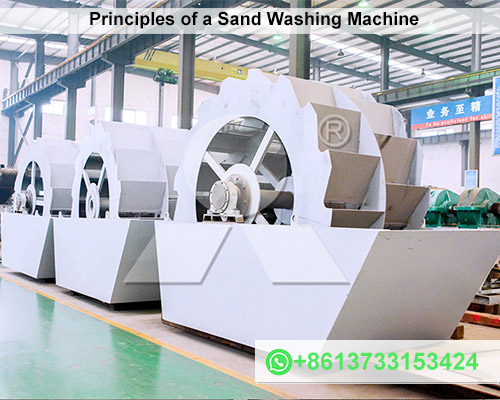What are the Basic Principles of a Sand Washing Machine?
A sand washing machine is an essential piece of equipment in the construction and mining industries. It is used to clean and remove impurities, such as dust, clay, and other unwanted particles from sand, thereby enhancing the quality of the sand for various applications. The basic principles of a sand washing machine involve the use of water, motion, and mechanical components to achieve this cleaning process. Below, we explore the key principles that govern the operation of a sand washing machine.
1. Material Feeding and Screening
The process begins with the feeding of raw sand into the machine. This sand often contains impurities like dust, clay, and silt. The sand enters the machine through a hopper and is directed toward a rotating drum or screen. The screen helps in the preliminary separation of coarse materials and debris. This initial screening is crucial to ensure that only the sand and finer particles proceed to the washing stage.
2. Agitation and Washing
Once the sand is separated from larger particles, it enters the washing chamber. Here, the sand is subjected to agitation through rotating paddles, spirals, or impellers, depending on the design of the machine. This agitation, combined with the continuous flow of water, helps to scrub and remove any remaining impurities. The washing process relies heavily on the principle of friction, where the abrasive action of the sand particles rubbing against each other and the machine’s surfaces loosens and washes away contaminants.

3. Water Flow and Separation
Water plays a crucial role in sand washing. Clean water is introduced into the washing chamber, and it flows through the sand, carrying away impurities. The water flow rate is carefully controlled to ensure that fine sand particles are not lost during the process. As the water passes through the sand, it separates lighter contaminants from the denser sand particles. This separation process is based on the principle of gravity, where heavier particles settle at the bottom, and lighter materials are washed away.
4. Dehydration and Dewatering
After washing, the cleaned sand is often wet and needs to be dried before it can be used. The sand washing machine typically has a dewatering section where excess water is removed from the sand. This is achieved through a combination of vibration, centrifugal force, and filtration. The sand is spread out over a vibrating screen or placed in a centrifugal device, where the water is forced out, leaving behind relatively dry sand. This step is essential to produce sand that meets the moisture content specifications for various applications.
5. Collection and Disposal of Wastewater
The wastewater generated during the sand washing process contains impurities removed from the sand. This water is collected in a settling tank or pond where solids can settle out. The settled solids can be removed, and the relatively clean water can be recycled back into the washing process or treated before being discharged. Efficient management of wastewater is crucial to ensure environmental compliance and reduce water consumption.
The basic principles of a sand washing machine revolve around the use of mechanical agitation, water flow, and gravity to clean and separate sand from impurities. Understanding these principles is essential for optimizing the performance of the machine and ensuring that the sand produced meets the quality standards required for construction, manufacturing, and other applications. Proper operation and maintenance of sand washing machines are key to extending their lifespan and achieving consistent, high-quality results.









